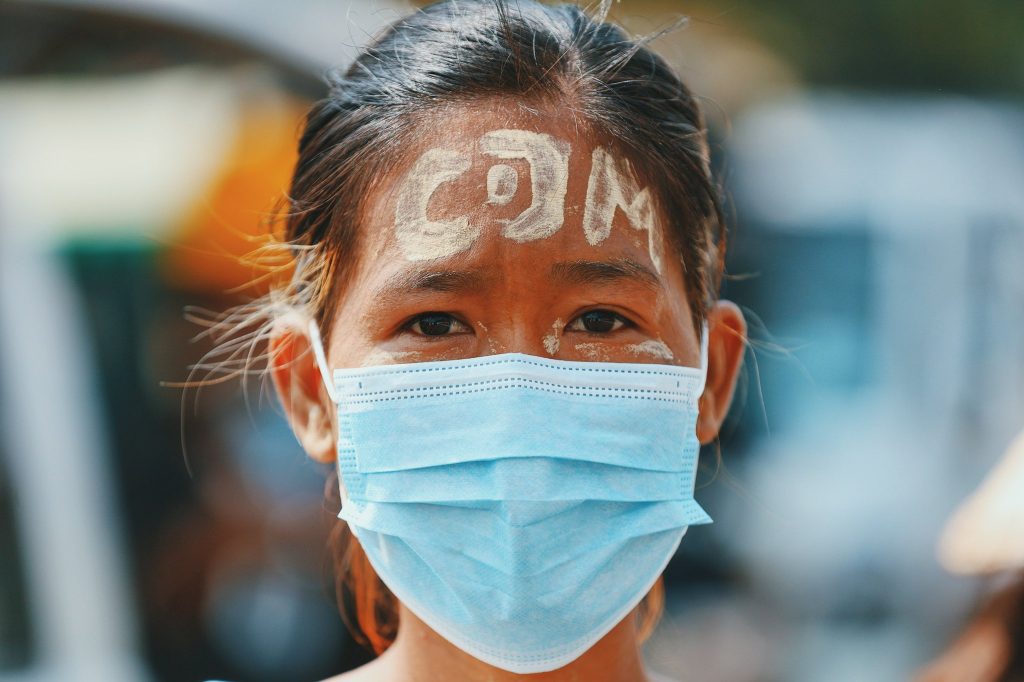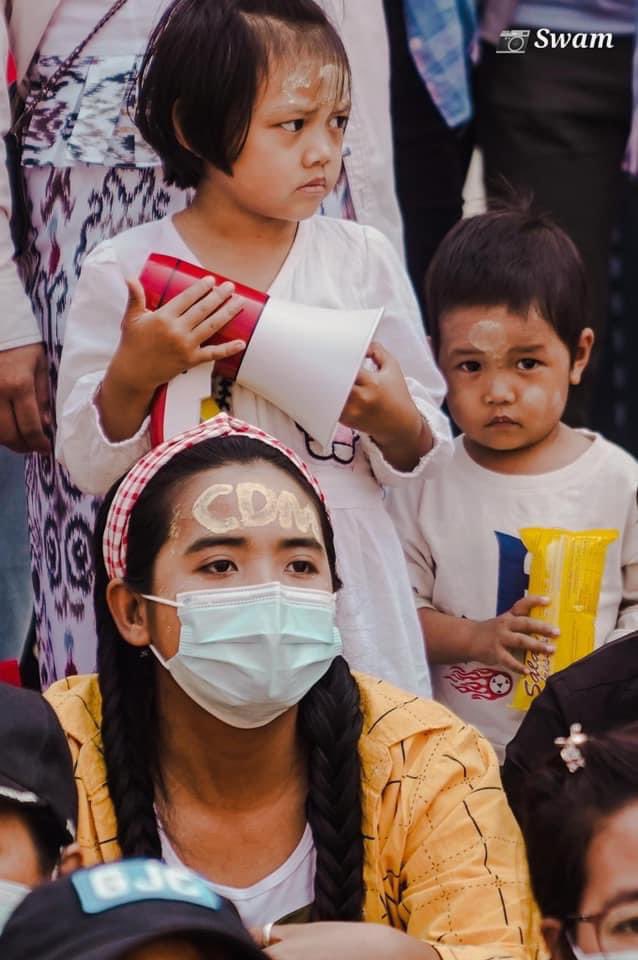
(Pic credit: May Wong/Twitter)
- Thanakha is Myanmar’s traditional yellowish-white cosmetic paste made from ground barks of the Thanakha tree.
- Now, civil disobedience movement (CDM) participants are using the country’s traditional facial cosmetic paste ‘thanakha’ as a tool to send the message of boycott and disobedience.
- The protesters designed a campaign titled as “The battle of Thanakha” where the participants painted “CDM” on their foreheads.
- The use of Thanakha for protests is expected to further increase the demand for the paste and in turn help the growers and producers.
As protests in Myanmar grow against the military coup, civil disobedience movement (CDM) participants are coming up with ingenious ways to express their anguish and anger against the military rulers. Few days ago, people and establishments had resorted to a boycott of goods and services linked to the Myanmar military. Now, they are using the country’s traditional facial cosmetic paste ‘thanakha’ as a tool to send the message of boycott and disobedience.
The new way of protest was started a day before ‘Thanakha Day’, which the country began to observe only in 2019 after the government planned to designate the full moon day of Tabodwe, an eleventh of Myanmar lunar calendar, as the Thanakha Day to promote the traditional cosmetic paste and growers of the Thanakha tree.
Thanakha is Myanmar’s traditional yellowish-white cosmetic paste made from ground barks of the Thanakha tree. The paste is recognized as a symbol of a mother’s affection and protection. Many children in Myanmar go to school with thanakha smeared on their faces by their mothers.
On February 25th, the protesters designed a campaign titled as “The battle of Thanakha” where the participants painted “CDM” on their foreheads. Young protesters are helping to paint other demonstrators and to restore messages washed away by sweat during the day.

The Military government has been accused of violent crackdown on anti-coup protests which has resulted in several fatalities. Hundreds have been arrested across the country for violent protests and for obstructing normal life. According to the Assistance of Association of Political Prisoners, more than 720 individuals have been detained by the military since Feb. 1.
Protesters are demanding the military regime step down, free the elected leaders and hand over power to the party, the National League for Democracy, they voted for in the November general election. Launched on Feb. 3, the CDM has gained momentum across the country and the regime has increased arrests of protesters and civil servants taking part in the movement.
The use of Thanakha for protests is expected to further increase the demand for the paste and in turn help the growers and producers. Thanakha trees are grown in central part of Myanmar, abundantly in Magway and Sagaing regions and there are about 121,405 hectares of Thanakha trees across the country so far.
May Wong, Senior Indochina Correspondent for Channel News Asia reported that thousands of protesters wearing the Thanakha paste embarked on a “Thanaka Revolution” Mandalay on 25 Feb. People from all ages have taken part in the “Thanaka Revolution ” with CDM and three-finger salute painted across their faces, arms and shoulders.
The protesters are also demanding the release of Aung San Suu Kyi and other leaders. Many protesters have taken to social media to report on the “The battle of Thanakha” and the “Thanaka Revolution”. One protesters wrote “Today Myanmar’s ‘Thanakha Revolution’ to make gun holders bitter. ‘Thanak’ is a gun and ‘kha’ is bitter in English. REJECT MILITARY COUP”.
Another pro-democracy activist wrote “Burmese Thanakha Fight for Democracy! Our citizens show our voices and protest peacefully by wearing our authentic natural cosmetic, Thanakha, on our faces today”, on Twitter. Another user said “People are participating in the Thanakha Revolution to fight against dictatorship in #Myitkyina, Kachin State today”.
Significance of Thanakha in current day Myanmar
A natural-based product, Thanakha is obtained from the bark of the Thanakha or Hesperethusa Crenulata tree. Traditionally grown in small farms in Central Myanmar or better known as the dry zone. Not many trees grow in the dry zone, coarse soil without much water and a really really hot climate. The Thanakha tree, however, seems to thrive especially in the driest regions.
Thanakha is a distinctive part of Myanmar culture and has been for over almost 2000 years. It is commonly seen applied to the face of women, men and children alike. It’s a very unique product, and women in Myanmar use it on a daily basis for a variety of purposes.
Myanmar people use Thanakha for its standalone sun protection factor and other beautifying effects. However, its true potential can only be achieved by further extracting the bark, roots, and even leaves. There are many varieties of Thanakha trees in Myanmar. A species procured from the organic Thanakha farms of Pakokku is also known to be very fragrant.
Traditionally, the tree’s bark is cut down to many small sections – some of them around 5 to 6 inches in length – and ground against a wet round stone slab also known as a Kyauk Pyin.
There are many modern implementations of Thanakha, as the sanitation and some side-effects of the traditional grinding method have been questioned. Hence, Myanmar FDA has stipulated strict rules and regulations as to how the Thanakha is formulated and used in many of the domestic cosmetic products.
